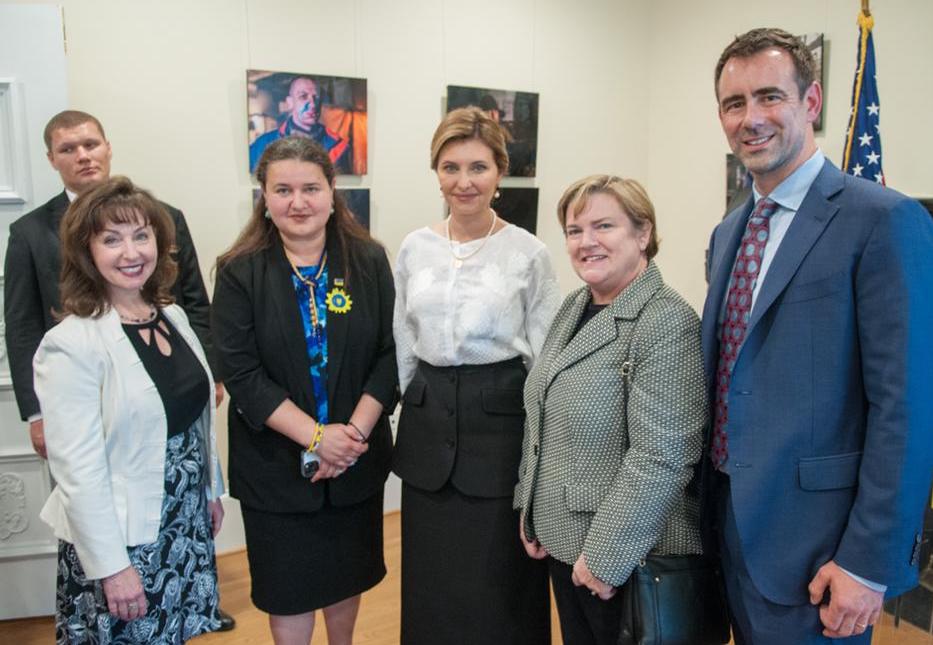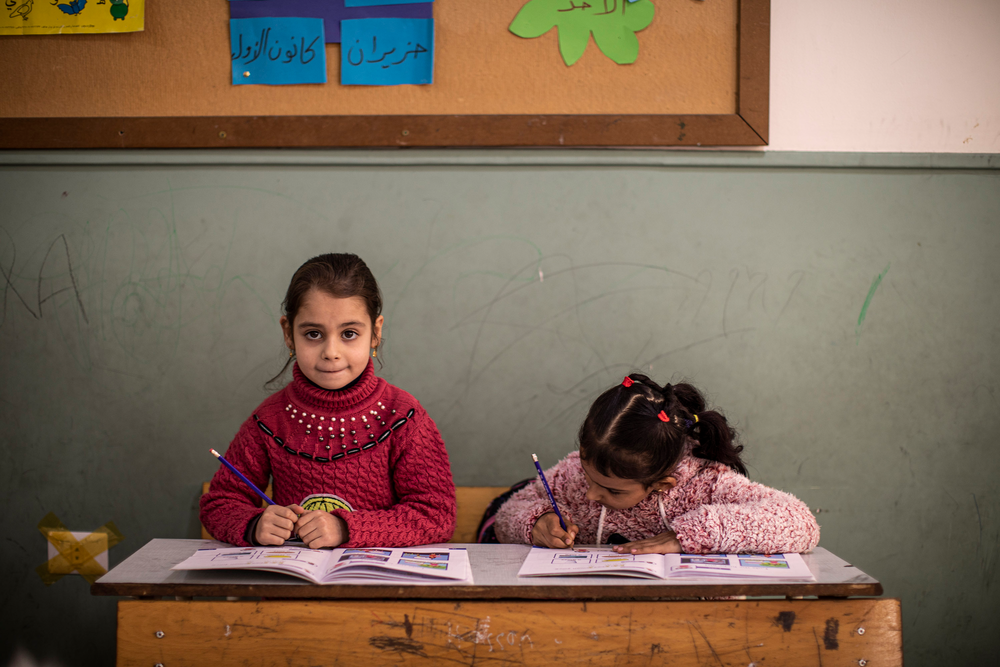
Conflicts drive 28m children from their homes and put education at risk
Children in conflicts, Education in emergencies
Refugee children get just 40 minutes school a day at a camp in Athens using UNICEF supplies Picture: UNICEF/Gripiotis
Urgent action is needed to protect almost 50 million children displaced from their homes – 28 million of them driven out by conflict.
The number of child refugees has soared by 77% in five years after violence erupted in Syria, Nigeria, Yemen, South Sudan, Afghanistan and other countries.
That means nearly half of all the world’s refugees are now children, according to a report released today by the United Nations children’s agency UNICEF.
It shows that only half of child refugees – those who have moved to other countries – are enrolled in primary school and less than one in four in secondary school.
A refugee girl or boy is five times more likely to be out of school than a non-refugee child. But the full picture is even worse – the figures for children displaced within their own countries far outweigh those for refugees.
UNICEF Executive Director Anthony Lake said: “Many of the youngest refugees have known only conflict and deprivation in their short lives.
Eight-year-old Nyayjaw kisses her sister Nyagua when their family was reunited after being apart for two years because of the conflict in South Sudan Picture: UNICEF/Rich
“If we fail to provide them – and all child refugees and migrants – with opportunities for education and a more normal childhood, how will they be able to contribute positively to their societies? What price will we collectively pay for that failure?
“But if young refugees are accepted and protected today, if they have the chance to learn and grow, and to develop their potential, they can be a source of stability and economic progress.”
The UNICEF report – Uprooted: the growing crisis for refugee and migrant children – showed that of the 28 million children who have left their homes because of violence, 10 million are refugees living in other countries, 17 million are displaced within their own countries and one million are asylum seekers.
Of all the child refugees under the protection of the UN Refugees Agency (UNHCR), half of them are in Syria and Afghanistan.
In 2015, 75 million children had their education disrupted or ended completely because of humanitarian emergencies – mainly conflicts.
In May, the Education Cannot Wait fund was launched at the first ever World Humanitarian Summit. But more urgent action is needed and more funds need to be pledged by donor countries to make the fund work. Sign the #SafeSchools Petition to urge world leaders to back the fund.
UNICEF suggests six actions to protect and help displaced, refugee and migrant children:
The agency said educational opportunity is a major driving factor for many children and families who choose to migrate. But refugee and migrant children can face many barriers to beginning and continuing their education.
The report points out that when children were asked in two recent surveys about their priorities after a humanitarian emergency, education was their top concern.
In those and other studies, adults also consistently ranked education among their top three priorities – alongside basic necessities such as food, water, shelter and health care.
UNICEF chief Anthony Lake said more children are crossing borders on their own. In 2015, more than 100,000 unaccompanied minors applied for asylum in 78 countries – three times the number in 2014.
Unaccompanied children are among those at the highest risk of exploitation and abuse, including by smugglers and traffickers.
Watch one child’s story of fleeing conflict
Lake added: “Indelible images of individual children – Aylan Kurdi’s small body washed up on a beach after drowning at sea or Omran Daqneesh’s stunned and bloody face as he sat in an ambulance after his home was destroyed – have shocked the world.
“But each picture, each girl or boy, represents many millions of children in danger – and this demands that our compassion for the individual children we see be matched with action for all children.”
Apart from those affected by conflicts, about 20 million other international child migrants have left their homes for a variety of reasons including extreme poverty or gang violence.
Many are at particular risk of abuse and detention because they have no documentation, have uncertain legal status and there is no systematic tracking and monitoring of their well-being.
More news

